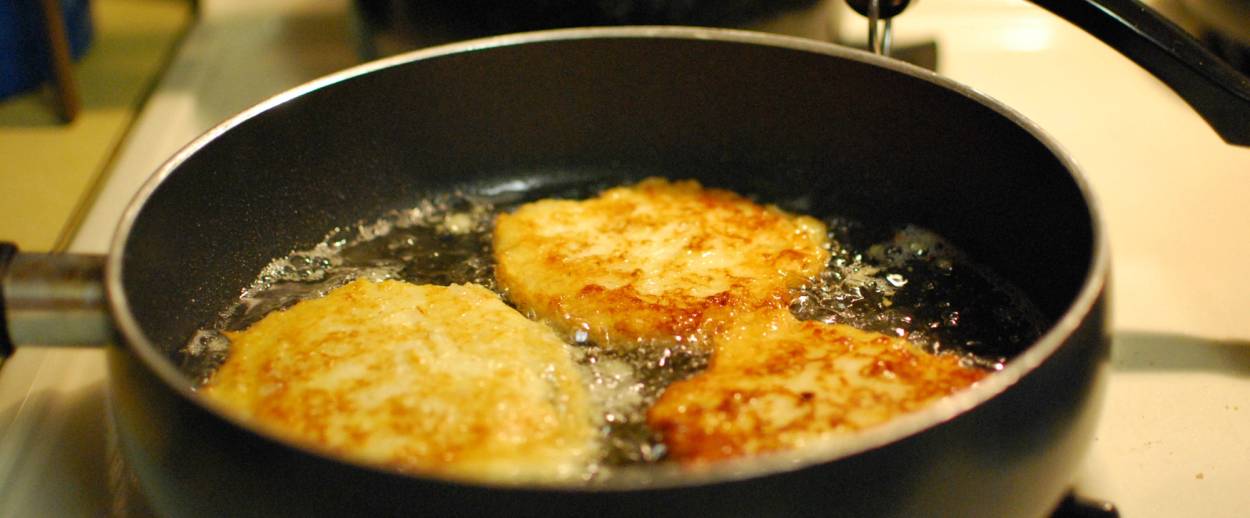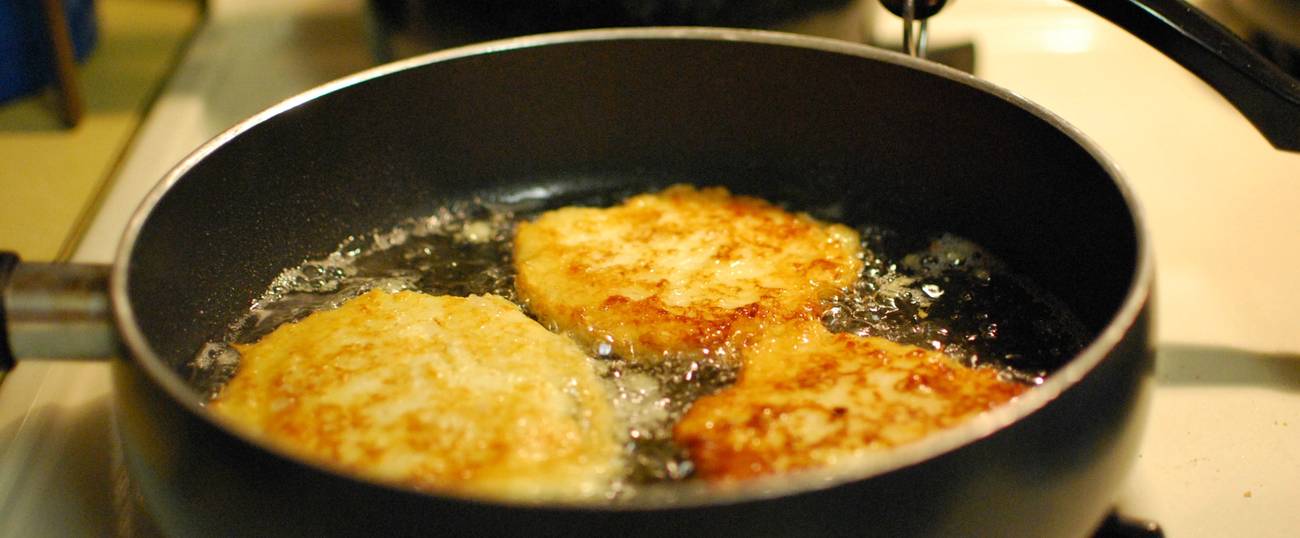Think Before You Fry
Consider these recent health studies as you ready the cooking oils to prepare your favorite Hanukkah treats




Cooking with oils can get complicated, especially around Hanukkah. On one hand, consuming latkes, sufganiyot (Israeli jelly doughnuts), Bimuelos, and other foods doused in artery-clogging lipids, is ingrained in Jewish tradition. On the other hand, many of us want to keep our diets and those of loved one’s healthy enough to see next year’s candles, while still preserving the taste of the Hanukkah delicacies we love. What to do? The following research about oils offers guidance and even glimmers of good news.
— One study published in November found that women who supplemented a Mediterranean diet with more olive oil showed a 68-percent lower breast cancer rate than those who added nuts or followed a control diet.
— An article published in October asserts that diets high fat in general can be part of a weight-loss regimen. This meta analysis found that “low-fat interventions” were not any more effective in shedding pounds than “higher-fat” strategies. The difference between subjects who consumed low- and high-carbohydrate diets was much more significant.
— Coconut oil is gaining traction. However, this saturated fat still oozes AT the bottom of the cooking oil pecking order set by the National Institutes of Health. Certain studies, however, associate eating the trendy fat with reduced waist circumference for women and for heart disease patients in general, as well as increased HDL (“good”) cholesterol.
— Unfortunately for latke fans, fried foods still receive a categorical thumbs down. Numerous studies associate such dishes with increased occurrences of Type 2 Diabetes, heart failure, obesity, and hypertension, a review published in the journal Nutrients found. It’s little wonder that USDA guidelines recommend we “choose baked, steamed, or broiled rather than fried foods most often.”
From a historical perspective, eating raw oil makes just as much sense as guzzling potato pancakes or jelly-filled doughnuts. According to Gil Marks’s Encyclopedia of Jewish Food, Hanukkah was linked with oils because Greco-Syrian Jews celebrated the re-dedication of the temple at the end of the olive harvest. Five hundred years later, Marks writes, the sages who authored the Talmud wove a new story about one day’s supply of oil burning for eight days. It took hundreds more years of refinement—until the 14th century—for Jews to celebrate the holiday with frying.
So is it time to replace latkes and sufganiyot with vinaigrette-dressed salads and raw cheesecake, or an olive tapenade? Let’s not rush to conclusions. The authors of the Nutrients article specified that health hazards emerged with “frequent consumption of fried foods (i.e., four or more times per week).” That’s a completely different story from consuming fried delicacies, say, six or seven times over one eight-day period. If you want to make a change to your Hanukkah menu, do it for a tasty change of pace, not the fear factor.
Related: You Love Latkes. You Love Brisket. For Hanukkah, Put Your Two Loves Together.
How to Make the Ultimate Sufganiyot—Israeli Jelly Doughnuts—for Hanukkah
Rhea Yablon Kennedy is a faculty member at Gallaudet University.